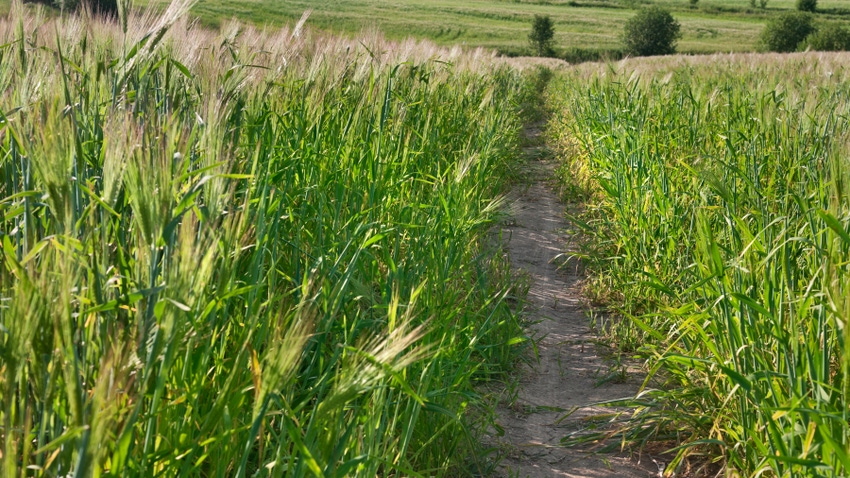April 24, 2023

by Heidi Reed and Sjoerd Duiker
With the unseasonably warm weather over the past several months, cover crops have been growing quickly.
This is usually a good thing because we know that we get the most out of our cover crops when they're allowed to grow for as many days and as big as possible.
But many counties have gotten about half as much precipitation as expected in an average year. While some rainfall has fallen, it likely won't be enough to alleviate all the dryness from this winter and early spring in some areas.
Although temperatures have dropped some, which will slow cover crop growth, keep an eye on your rain gauge and consider burning down cover crops early to lessen the risk of robbing moisture from your corn or soybeans.
What research has found
Research from Penn State and other institutions shows that planting green significantly dries the top 3 inches in the soil profile compared to planting into cover crops killed a week or more preplant.
This is because the growing cover crop transpires and draws water out of the root zone. A drier seedbed can be great in a wet spring, but disastrous in a dry spring.
Increased mulch cover after planting green conserves soil moisture in summer, but this benefit is outweighed by potential stand establishment issues, and related corn yield loss, caused by planting into overly dry soil.
The beauty of planting green is that it's an adaptive management practice. Maybe you had plans to plant green when you seeded rye in the fall, but you can change those plans in response to the weather for the best possible outcome.
On the other hand, if you have a field that sits wet, or you are lucky enough to get timely rain in the coming weeks, you can still plant green and benefit from moisture management, weed suppression and other benefits.
Your best options are always either planting into a dead, brown cover crop, or planting green — don't get stuck somewhere in between.
Follow these steps
If you do decide to plant green, here are some useful steps to consider:
Soybeans are more adaptable to planting green than corn. Get comfortable with soybeans first.
Ensure equipment is well-maintained and calibrated.
Roll cover crops over 18 inches tall, especially if planting corn.
Use row cleaners to help warm soil in the furrow.
Planters work better for soybean establishment than drills in planting green due to better seed placement.
Check planting depth. You must account for cover crop thickness.
Put an extra 50 pounds per acre of N at corn planting to compensate for N tie-up by a cereal cover crop. The remainder of N needs applied at sidedress based on yield goals. PSNT and tissue sampling can help you dial in your N needs.
Scout for early-season pests and use Integrated Pest Management.
Minimize neonicotinoid seed treatments and "insurance" insecticide sprays that can kill predators of insect and slug pests, which are allies in pest control.
Consult with farmers in your area who have planted green successfully.
For more details on planting green, read our full research summary.
Reed is an agronomy educator with Penn State Cooperative Extension. Duiker is a professor of soil management and applied soil physics at Penn State.
Source: Penn State Cooperative Extension
You May Also Like




